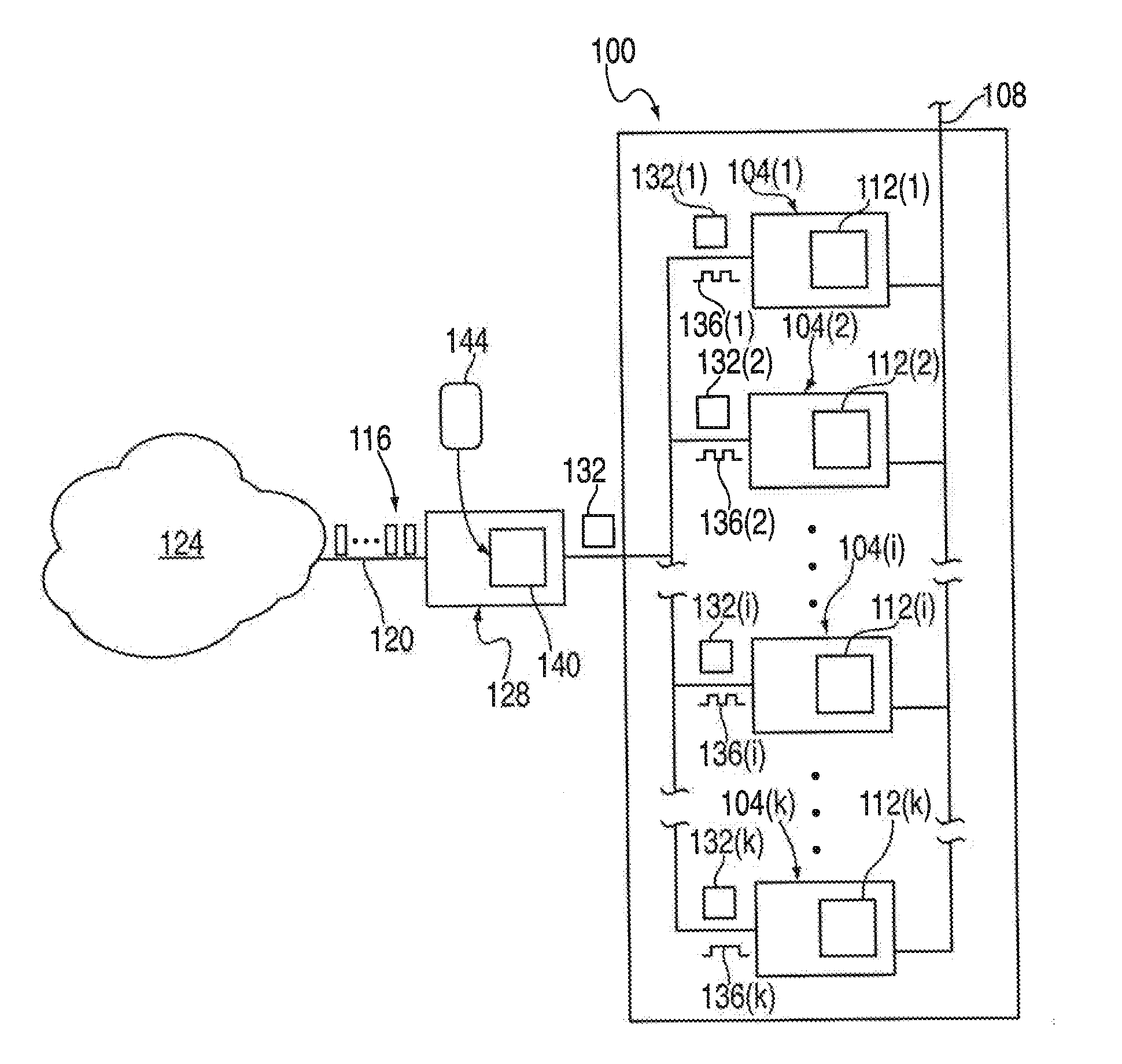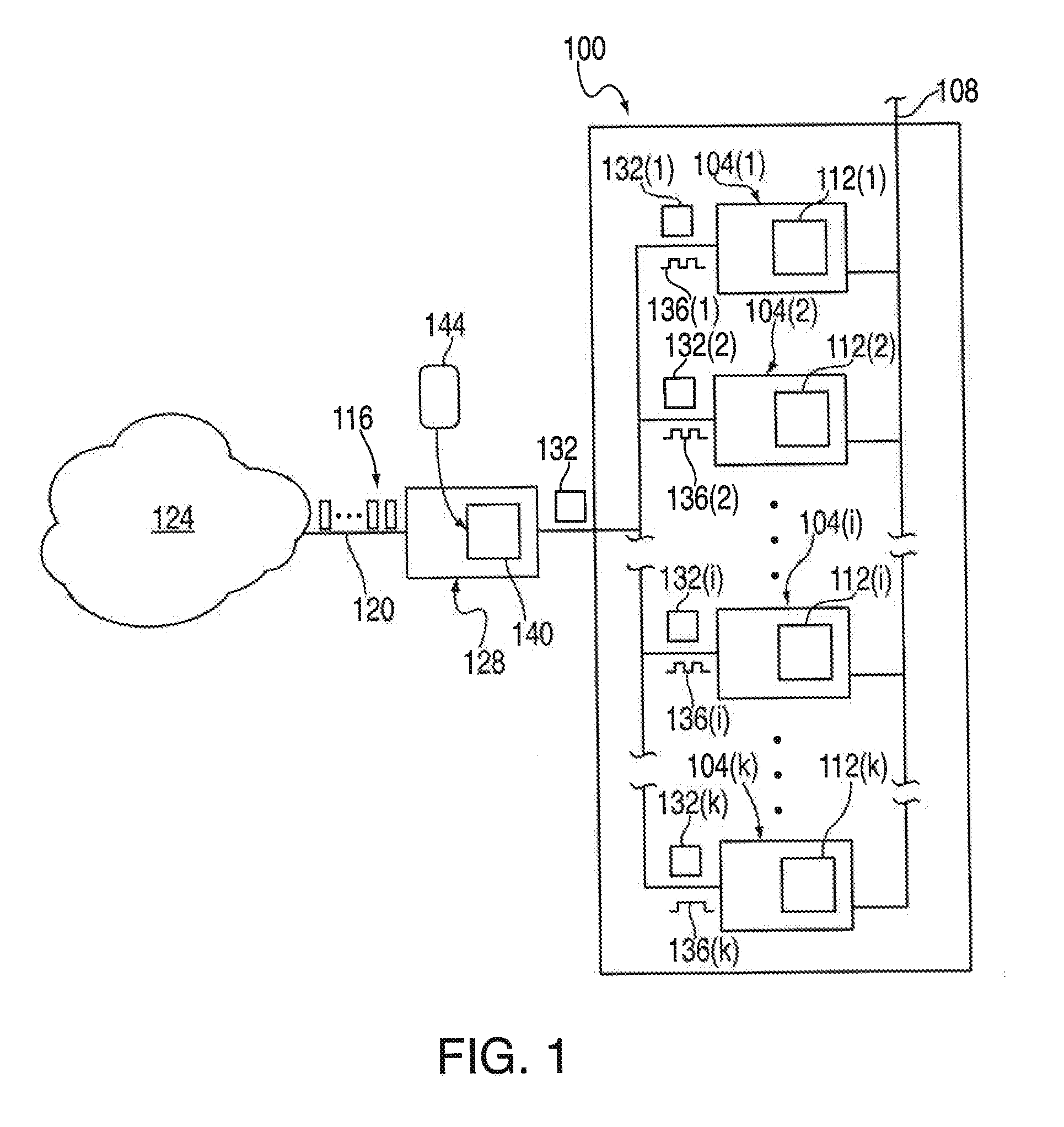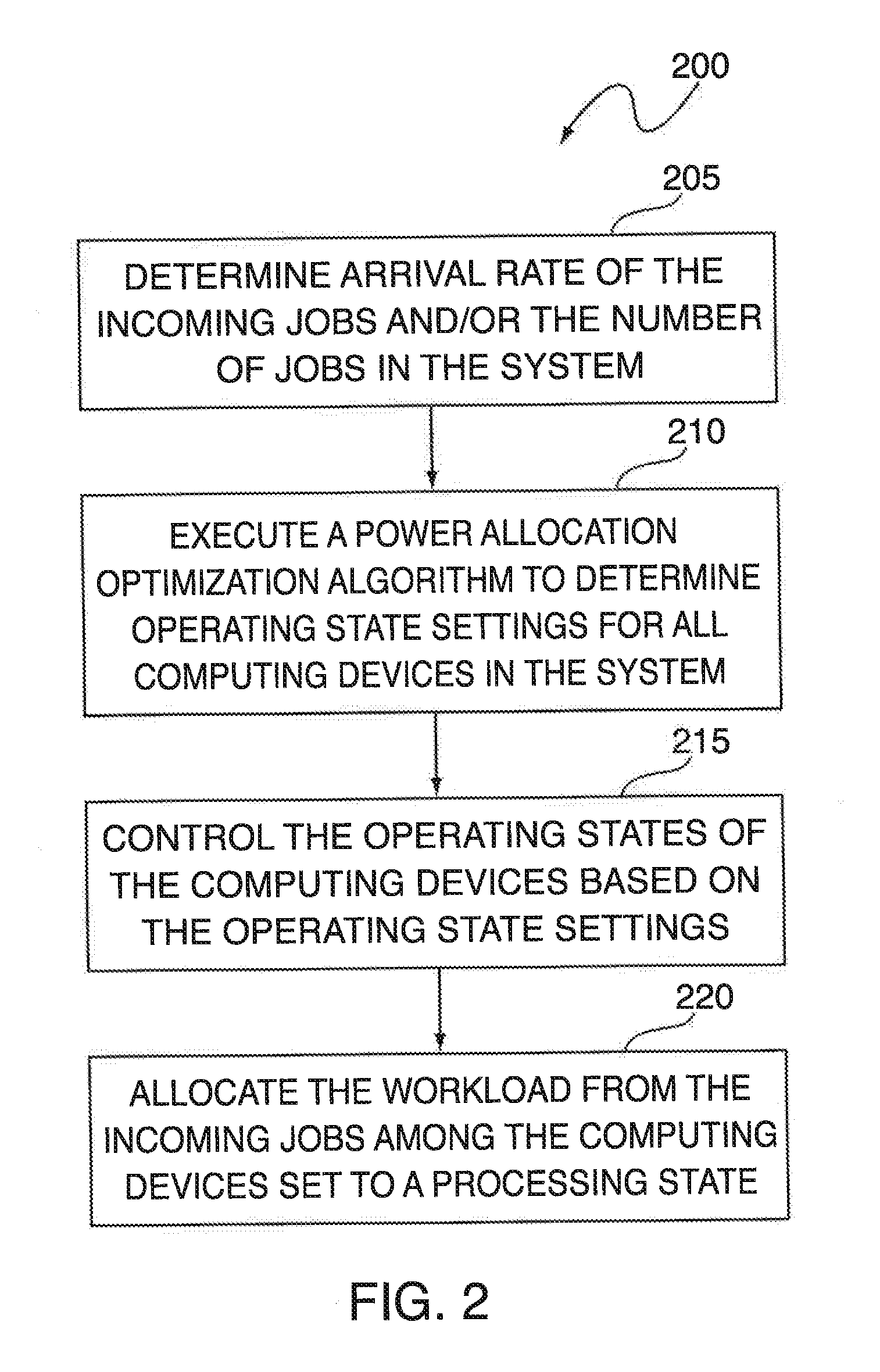Power Budget Allocation in Multi-Processor Systems
a multi-processor system and power budget technology, applied in the direction of instruments, climate sustainability, program control, etc., can solve the problem of increasing the amount of power consumed by servers
- Summary
- Abstract
- Description
- Claims
- Application Information
AI Technical Summary
Benefits of technology
Problems solved by technology
Method used
Image
Examples
Embodiment Construction
[0036]Aspects of the present invention are directed to optimizing allocation of a fixed power budget in a multi-processor system, such as a server farm, that processes streams of jobs coming into the system. Some of these aspects are directed to a power allocation optimization scheme that implements a queuing theoretic model that minimizes the mean time for executing the incoming jobs. The queuing theoretic model accounts for a number of factors, such as the power-to-frequency relationship of the processors in the system, the arrival rate of the jobs, the power budget, among others, that affect the mean response time of the system, i.e., the mean time that it takes the processors within the system to complete the incoming jobs, and leverages the ability to selectively control the operating frequencies of the individual processors in a way that minimizes the mean response time for a given power budget. These and other aspects of the present invention are described and exemplified bel...
PUM
 Login to View More
Login to View More Abstract
Description
Claims
Application Information
 Login to View More
Login to View More - R&D
- Intellectual Property
- Life Sciences
- Materials
- Tech Scout
- Unparalleled Data Quality
- Higher Quality Content
- 60% Fewer Hallucinations
Browse by: Latest US Patents, China's latest patents, Technical Efficacy Thesaurus, Application Domain, Technology Topic, Popular Technical Reports.
© 2025 PatSnap. All rights reserved.Legal|Privacy policy|Modern Slavery Act Transparency Statement|Sitemap|About US| Contact US: help@patsnap.com



